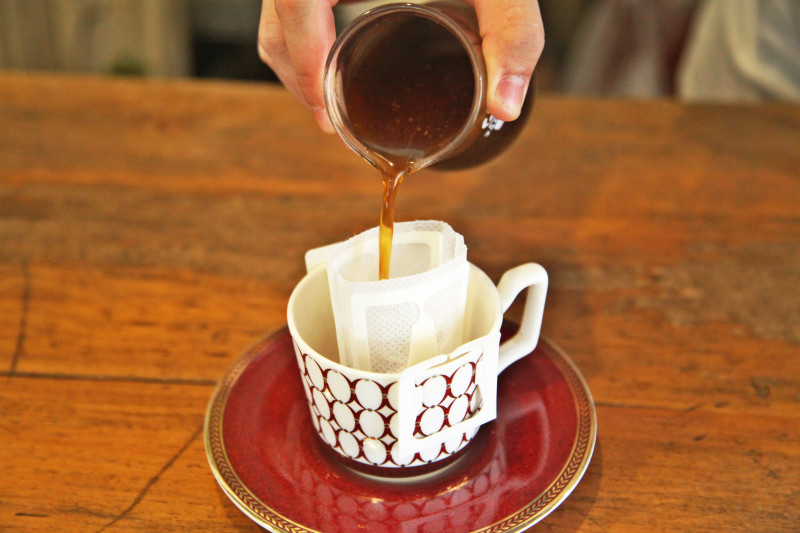Introduction of Handege Factory Lishu Cooperative and Ji processing Plant in Coffee Qianbu producing area of Kenya

Professional coffee knowledge exchange more coffee bean information please follow the coffee workshop (Wechat official account cafe_style)
Kenya Qian Blisu Cooperative and Ji processing Plant AB double hand-picked batches
Producing area: Kiambu, Kenya, Africa
Altitude: 1850-1900 m producer: regional smallholder varieties: SL28,SL34
Processing plant: Heji processing plant (Handege Factory)
Acidity: ◆◆◆◇◇
Sweet: ◆◆◆◆◇
Bitterness: ◆◇◇◇◇
Sweet taste: ◆◆◆◇◇
Baking: shallow and medium baked Medium Light Roast
Flavor notes: citrus, blackcurrant, plum, white flower, black tea.
Raw bean producing area: Kiambu, Kenya, Africa
Altitude: 1850-1900 m
Producers: regional small farmers
Varieties: SL28, SL34
Processing plant: Heji processing plant (Handege Factory)
Treatment: Kenyan washing
Coffee producing areas in Kenya:
Coffee from Kenya (Kenya) is mostly grown at an altitude of 1500 Murray 2100 meters and is harvested twice a year. Kenyan coffee is grown by small farmers. Kenyan coffee is produced near Mount Kenya in central Kenya and is sometimes guaranteed after the capital, Nairobi. Kenya AA (Kenya AA) is produced on the 17000-foot hillside of Mount Kenya near Nairobi, the capital of Kenya. Kenya AA is the largest coffee bean in the country, followed by An and B again. Its unique bitterness and wine taste are most praised by people. Located in Kenya below the equator of East Africa, the coffee beans planted are high-quality Arabica seeds. The size of beans is medium-large, very thick and tasty, and moderate acidity.
The characteristics of Kenyan coffee:
People in the coffee industry regard Kenyan coffee as one of its favorite products, with wonderful and satisfying aromas, balanced acidity, well-proportioned granules and excellent fruit flavors.
Kenyan coffee grades are divided into seven grades according to the size of coffee beans and six grades according to taste. The best coffee in Kenya is bean berry coffee (PB), followed by AA++, AA+, AA, AB and so on. The fine coffee is shiny, delicious and slightly alcoholic. "Kenya AA" is particularly well received in terms of taste.
Kenyan coffee has a slightly sour, thick aroma, raw bean particles are small, green to grayish green. Kenyan coffee beans are water-washed Arabica beans, famous for it. Especially in the UK, Kenyan coffee has surpassed Costa Rican coffee to become one of the most popular coffee.
Flavor: aromatic, full-bodied, with fruit flavor, rich and perfect taste
Suggested baking methods: shallow baking, medium-shallow baking
★★★: excellent
...
The Kenyan coffee market:
The Kenyan government takes the coffee industry very seriously, where it is illegal to cut down or destroy coffee trees. Kenyan coffee buyers are world-class high-quality coffee buyers, and no other country can grow, produce and sell coffee on a continuous basis like Kenya. All coffee beans are first acquired by the Kenya Coffee Commission (CoffeeBoardofKenya, CBK), where they are identified, graded, and then sold at weekly auctions, where they are no longer graded. The Kenya Coffee Commission only acts as an agent to collect coffee samples and distribute them to buyers so that they can determine the price and quality. The auction in Nairobi is for private exporters, and the Kenya Coffee Commission pays growers a price below the market price.
After harvesting the coffee, the Kenyan coffee plantation first sends the fresh coffee beans to the cooperative cleaning station, where the washed and dried coffee is sent to the cooperative in the form of "parchment coffee beans" (that is, coffee beans covered with endocarp) ("parchment coffee beans" is the last state of coffee beans before peeling). All the coffee is collected together, and the growers charge the average price according to their actual quality. This trading method generally works well and is fair to both growers and consumers.
Important Notice :
前街咖啡 FrontStreet Coffee has moved to new addredd:
FrontStreet Coffee Address: 315,Donghua East Road,GuangZhou
Tel:020 38364473
- Prev

Coffee from Enbu, Kenya introduces the northernmost Kathangariri of Kenya to Kay San Garry.
Professional coffee knowledge exchange more coffee bean information please pay attention to coffee workshop (Wechat official account cafe_style) Origin: Kenya Manor name: Kenya Embu production area Kay Sengali treatment Plant AA treatment: Kenyan washed beans: 100% Arabica SL28 SL34 flavor: green plum red grapefruit willow black currant acid unrestrained structure solid fresh coconut
- Next

Meru from Meilu Coffee production area in Kenya introduces the coffee flavor characteristics of Kigari Jijali treatment plant.
Professional coffee knowledge exchange more coffee bean information please follow the coffee workshop (Wechat official account cafe_style) National Kenya Meilu producing area (Meru) Manor Gegari processing Plant (Kigari) 1300m above sea level varieties SL34, SL28 shallow baking treatment grade AA Flavor, Kiwi fruit, orange fruit notes and berry aromas, caramel, honey sweet
Related
- Detailed explanation of Jadeite planting Land in Panamanian Jadeite Manor introduction to the grading system of Jadeite competitive bidding, Red bid, Green bid and Rose Summer
- Story of Coffee planting in Brenka region of Costa Rica Stonehenge Manor anaerobic heavy honey treatment of flavor mouth
- What's on the barrel of Blue Mountain Coffee beans?
- Can American coffee also pull flowers? How to use hot American style to pull out a good-looking pattern?
- Can you make a cold extract with coffee beans? What is the right proportion for cold-extracted coffee formula?
- Indonesian PWN Gold Mandrine Coffee Origin Features Flavor How to Chong? Mandolin coffee is American.
- A brief introduction to the flavor characteristics of Brazilian yellow bourbon coffee beans
- What is the effect of different water quality on the flavor of cold-extracted coffee? What kind of water is best for brewing coffee?
- Why do you think of Rose Summer whenever you mention Panamanian coffee?
- Introduction to the characteristics of authentic blue mountain coffee bean producing areas? What is the CIB Coffee Authority in Jamaica?

